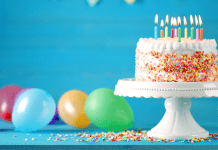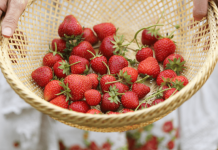
On a street corner at midnight, two figures exit a car under a streetlamp. They clasp hands for a moment and a message is passed – without a word, without a secretive slip of paper, transmitted through the simple gesture of taking hands.
Arriving home after a late night out, we have stopped in the driveway to look up at the stars, to admire God’s handiwork, to locate our familiar constellations and name them. The Hand-Take is instinctual as we are awed by the grandeur of the nighttime sky; we stand together with our heads tilted back and my daughter gives my hand a squeeze as if to say, “Look, Mom – all this, and Heaven too!”
This is the power of the Hand-Take, an impulse born of the emotional weight of a moment, unplanned, yet as bonding an action as a full-body hug. It is a small gesture that can convey a range and depth of meaning far beyond the simplicity of my child’s hand in mine.
The Hand-Take is one of our tools of communication, a shortcut that imparts a variety of meanings depending on the individuals and the circumstances. Just like a handshake, the Hand-Take can speak volumes in the briefest of moments.
It makes me wonder why people don’t talk more about this small gesture that can communicate so much.
It often happens without any force of will on my part, or even without any conscious thought. In a store parking lot, both kids juggling earbuds, phones and bags, we get out of the car and head towards the door. Cars most often slow down for us, but sometimes do not – and then it happens. I reach out to take both of their hands before we cross – and there is no awkward pause as they let me – and I hold on tightly until we reach the other side of the lane.
The only strange thing about this is that my children are 14 and 19.
The instinctive gesture is as much about connection as about restraint – we are a tribe and we are on this trek together. It is also about what they mean to me, and about my primary role in life – the mother-protector, nudging her progeny to safety and away from danger.
While the Hand-take in this case is clearly about staying safe, sometimes it takes on other meanings, depending on the circumstances. A hand-clasp may say, “I am proud of you . . . Hang in there . . . Good luck on the test . . . Everything will turn out okay . . . You are beautiful . . . I am here for you . . . , “ and so much more.
As children grow older, self-consciousness can limit how much affection they are comfortable displaying. Tonight, my youngest came and sat on my lap for a rare and precious snuggle and I asked her, “Do you remember how much you loved my arms when you were little?” She smiled and nodded.
Her baby-self would twine her little hands around my pillowy upper arms and up my sleeves, like the most determined vine, as I rocked her. For her first few years, that became the defining gesture of connection between us. Now that she is on the cusp of young womanhood, too much PDA from her mom makes her uncomfortable. A brief hand-take may be our one physical connection for the day. I love that she still lets me take her hand when hugging would be too much – and I need that connection to her still.
The Hand-Take can be a discreet and effective way to show support, especially when my Mama Radar is picking up that all is not well emotionally for one of our kids. Holding hands helps to lessen anxiety and relieve stress, and there is science to back this up.
It seems to me that the Hand-Take condenses our emotional intent, our caring or warning or just acknowledgement that we see what our child is going through, and transmits that through physical sensation, nerve endings in the skin, matter, energy – and is received by the other person, just as effectively or more so than words could ever do.
Earlier this summer, we toured a quad apartment in Norman, where our oldest daughter will be living for her third year at OU. As our little parade of family and tour guide wound through the halls and rooms of the apartment, my daughter and I stayed back to look at her room and examine its storage potential.
This will be her very own room in her first apartment. This will be her first foray into living away from her mom, dad, and sister. I reached out and took her hand, and gave it a prolonged squeeze. “You will be okay, and I am never letting go.”


















